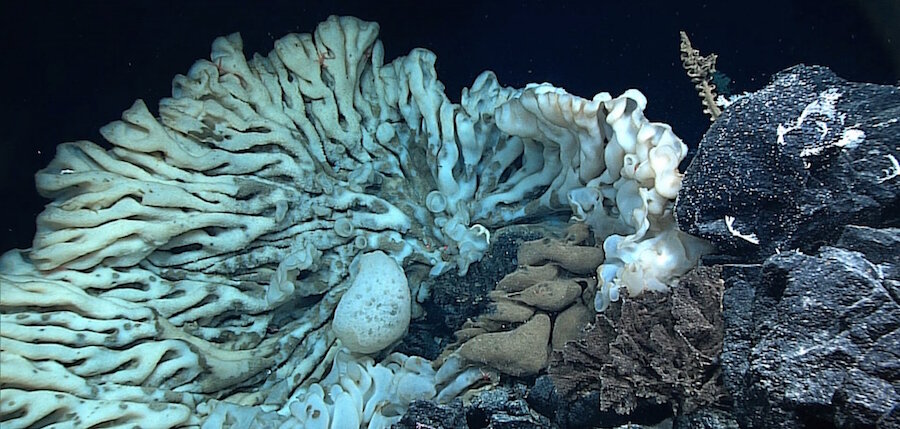Is that a minivan or a sea sponge? Scientists find possible oldest animal.
Loading...
Just in case scientists needed a reminder of how enigmatic deep-sea life is, an incredibly large sea sponge was discovered near Hawaii.
Seven thousand feet below the surface, a deep-sea expedition stumbled upon a "sponge the size of a minivan," the largest ever recorded, according to researchers. Since the discovery in 2015, the National Oceanic and Atmospheric Administration (NOAA) has been studying the mysterious creature. Their findings were recently published in the scientific journal Marine Biodiversity.
"The largest portion of our planet lies in deep waters, the vast majority of which has never been explored," Daniel Wagner, science lead for the expedition, said in a NOAA press release. "Finding such an enormous and presumably old sponge emphasizes how much can be learned from studying deep and pristine environments such as those found in the remote Papahānaumokuākea Marine National Monument."
Giant-sized sea sponges are not uncommon. Several different types are known to grow to large sizes and provide key ecological functions in the regions where they live. They can provide habitats to other smaller creatures and filter seawater.
Prior to the recent find, a colony of Aphrocallistes vastus Schulze, a type of sea sponge, was found in 1887 near western Canada. It remained the largest sea sponge ever documented for more than 100 years and measured more than 11 feet in length, 3.6 feet in height and 1.6 feet in width, according to the study.
The newly found Hawaiian sea sponge is even bigger: more than 11 feet in length, 6.6 feet in height, and almost 5 feet in width.
Exact details about massive sea sponges in general can be scarce. Some sponges capable of growing to massive sizes can live for thousands of years, scientists believe.
Dr. Wagner cautiously estimated this specimen "is likely a very old sponge on the order of century to millennia," according to an interview with New Scientist, although he also noted, "Sponges don't have things like growth rings that can be used to estimate age."
The researchers found the sponge during an expedition aboard the R/V Okeanos Explorer, using remote-controlled diving vehicles (ROV) to explore the deep areas around the Northwestern Hawaiian Islands.
The crew turned around a northern underwater ridge and discovered the brainlike, ethereal-looking massive sponge.
"Oh, my goodness. Where did this guy come from?" one researcher asked when the ROV first caught sight of the sponge on video.
"This is the largest thing I've ever seen underwater," another researcher said.
Measurements of the sponge were made from images taken by the ROV with low laser beams projected onto the sponge as a scale. Researchers did not take a sample from the giant, but did capture a collection of samples from a similar sponge found nearby. They believe both specimens are from the hexactinellid family Rossellidae and subfamily Lanuginellinae, based on microscopic analysis.
Aside from the two specimens found, no other examples of the species were seen during more than 18 deep-sea dives with the ROV.
The finding adds credibility to the deep-sea exploration projects and the use of remotely controlled sea-crafts, say scientists connected with the project.
"The finding of such a large organism as that reported here highlights the value of using deep-diving technologies in surveying the deepest parts of our oceans, which remain largely unexplored," the study states.






